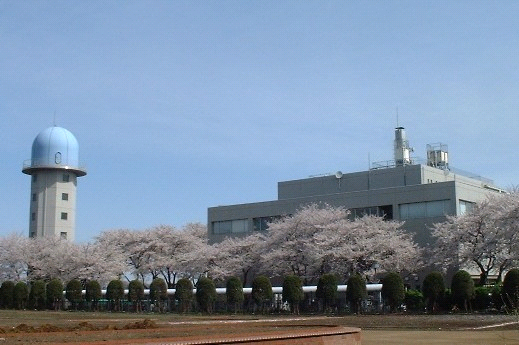Within the structural framework of Japan's central government, the Japan Meteorological Agency (JMA) is placed as an extra-ministerial
bureau of the Ministry of Land, Infrastructure, Transport and Tourism (MLIT).

Organizational chart of the national authorities of Japan
JMA is comprised of Headquarters, Regional Headquarters, Local Meteorological Offices and Weather Stations, and Auxiliary Facilities.

Organizational structure of JMA
JMA Headquarters serves as both the administrative and operational center of the Agency. It has a Director-General, a Deputy Director-General, Deputy Director-General for Disaster Risk Reduction
and four departments: the Administration Department, the Information Infrastructure Department, the Atmosphere and Ocean Department, the Seismology and Volcanology Department.
To provide a wide range of services for local communities, JMA
operates a number of observatories and weather stations across
the country. The Sapporo, Sendai, Tokyo, Osaka, Fukuoka and Okinawa Regional Headquarters (RHQs)
serve as regional central offices
directing 50 Local Meteorological Offices (LMOs) and 2
Weather Stations, both of which provide information services on
prefectural and sub-prefectural levels.
A total of 5 Aviation Weather Service Centers (AWSCs) and 2 aviation weather stations have been
established to support aviation meteorological services.

JMA main offices
The JMA auxiliary facilities outlined below are operated to support specialized services such as research, investigation and education/training.
The Meteorological Research Institute (MRI) is a JMA research facility. Its eight research
departments cover broad areas of meteorology including weather forecasting, climate,
typhoons, physical meteorology and observation systems, as well as other fields related to
earth science such as seismology, volcanology, oceanography and geochemistry.
The Meteorological Satellite Center (MSC) has been operating the Himawari series of
geostationary meteorological satellites since 1978 to carry out earth observation and related
telecommunication operations. The Center is also responsible for deriving operational
products from the satellites and other polar-orbiting satellites such as the US NOAA-series of spacecraft.
The Aerological Observatory conducts comprehensive observation of the upper
atmosphere using radiosondes and other instruments. It also observes
the ozone layer and solar radiation, including the harmful ultraviolet type. The Observatory
functions as a technical center for studies on the upper atmosphere and for the development
and improvement of technologies related to upper-air observation.
The Kakioka Magnetic Observatory monitors electromagnetic conditions in and around the earth.
It provides geomagnetic data for monitoring of the solar-terrestrial environment and for investigations
on the prediction of volcanic eruptions. The Observatory participates in the world's standard network
for geomagnetism (INTERMAGNET) which is a member of the World Data System (WDS) established by the International
Council for Science (ICSU).
The Meteorological College is a JMA training institute offering four-year college
courses and various training programs. On the four-year course, a total of around
60 students are educated in meteorology as well as basic science and geophysics.
Graduates of the College go on to work for JMA as professional staff members. The
training programs comprise a number of short-term courses on weather forecasting,
seismology/volcanology and marine meteorology, and are aimed at improving the
technical capabilities of JMA staff members.







